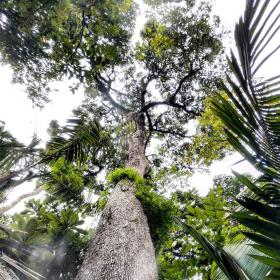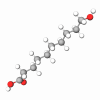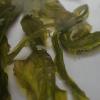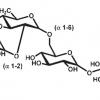Brazil nut (Bertholletia Excelsa) oil (Bertholletia Excelsa Seed Oil) is purified and refined oil, an emollient comparable to sesame oil. With a fatty acid distribution similar to sesame oil, it is expected to have much the same properties as this traditional cosmetic oil. This tropical oil traces its origins to the biologically rich resources of the Amazon rain forests of Peru.
Brazil nut oil is a pale yellow oil with a bitter taste obtained from the harvested fruit of Bertholletia excelsa, a tree growing wild throughout the South American rainforest. This tropical tree can reach up to 160 feet high and live for up to 1000 years. The nuts used in the extraction of Bertholletia Excelsa seed oil originate in the buffer area surrounding the Tambopata-Candamo Reserved Zone, a tract of protected forest lying in the Madre de Dios region of Peru.
Bertholletia Excelsa seed oil is prepared from nuts using presses. The oil from the first pressing is successively decanted, filtered, and then stored under nitrogen. The oil is finally lightly refined in order to remove its free acidity, which can sometimes reach very high levels in crude oil, together with the by-products of oxidation (especially peroxides).
Brazil nut oil can be used as an emollient in either skincare or hair care products. Because its content of Linoleic Acid is relatively high, Brazil nut seeds should help maintain the skin's barrier function. Linoleic Acid is a TEWL-controlling essential fatty acid and a well-known part of the fatty acid complex found in epidermal lipids.Formulations containing Bertholletia Excelsa seed oil yield creams and lotions with good rub-in characteristics and an excellent after-feel. It is soluble in many of the commonly used anionic surfactants and can also be used in shampoos and facial cleansers where it acts as a lubricant and an emollient.
Ingredients
Origin
This is one of the highest trees in the Amazonian forest; it can reach a height of 30 meters or more. It grows best in the regions of the forest with a thick, well-drained topsoil that is thus not marshy. The green, alternate leaves are full, oblong, and fairly tough.
The spherical to elliptic fruit is very large. It measures 10 to 12 cm in diameter and weighs between 0.5 and 2.5 kg. When ripe, it looks like a sea-urchin shell. It is ligneous in its outer part, and fleshy on the inside. The fruit usually contains 12 to 20 seeds, or "nuts", closely packed together. On average, the trees produce 100 to 300 fruits per year.
History
For centuries, it has been commonly used as a food in the Amazonian regions, either as it is, especially in Peru, or grated and mixed with other products (Manioc flour, etc.), in Brazil and elsewhere. The oil as such is used by the local populations and the "country dwellers" for cooking. The oil is traditionally used in Peru and in other countries of South America to make soap.
Nowadays, Bertholletia Excelsa seed oil is used increasingly in cosmetics. It is added to shampoos and "treatment" conditioners, as it is said to make the hair shiny, silky, easy to comb or brush, and soft. It also apparently stabilizes the properties of surfactants and helps to clean the hair. Finally, Bertholletia Excelsa seed oil is used in moisturizing skin-care products and creams to keep the skin soft and smooth.Biological Habitat
With its enormous variety of flora and fauna, Peru is recognized internationally as a country of 'megadiversity.' The Tambopata-Candamo Reserved Zone itself is located south of the Madre de Dios River surrounding the Pampas del Heath National Sanctuary. This tropical haven is the site where the most significant single congregation of birds and butterflies was witnessed and an area where endangered species, such as the giant river otter, the black caiman, and many threatened parrots and macaws, have taken refuge. However, outside these safe environs, increased logging activities and other ecologically destructive practices are severely threatening the Madre de Dios —the last tract of pristine Amazon forest remaining in Peru.
The sustainable harvesting of the Brazil nut tree is tantamount to preserving the proliferation of wildlife living there. The Brazil nut tree is considered a 'keystone' species since it attracts and helps sustain many other species who use it as a place to live, breed, and pollinate. In other words, it is the lifeblood of other life forms, such as bees, birds, and orchids, because they depend on the Brazil nut tree for survival.











